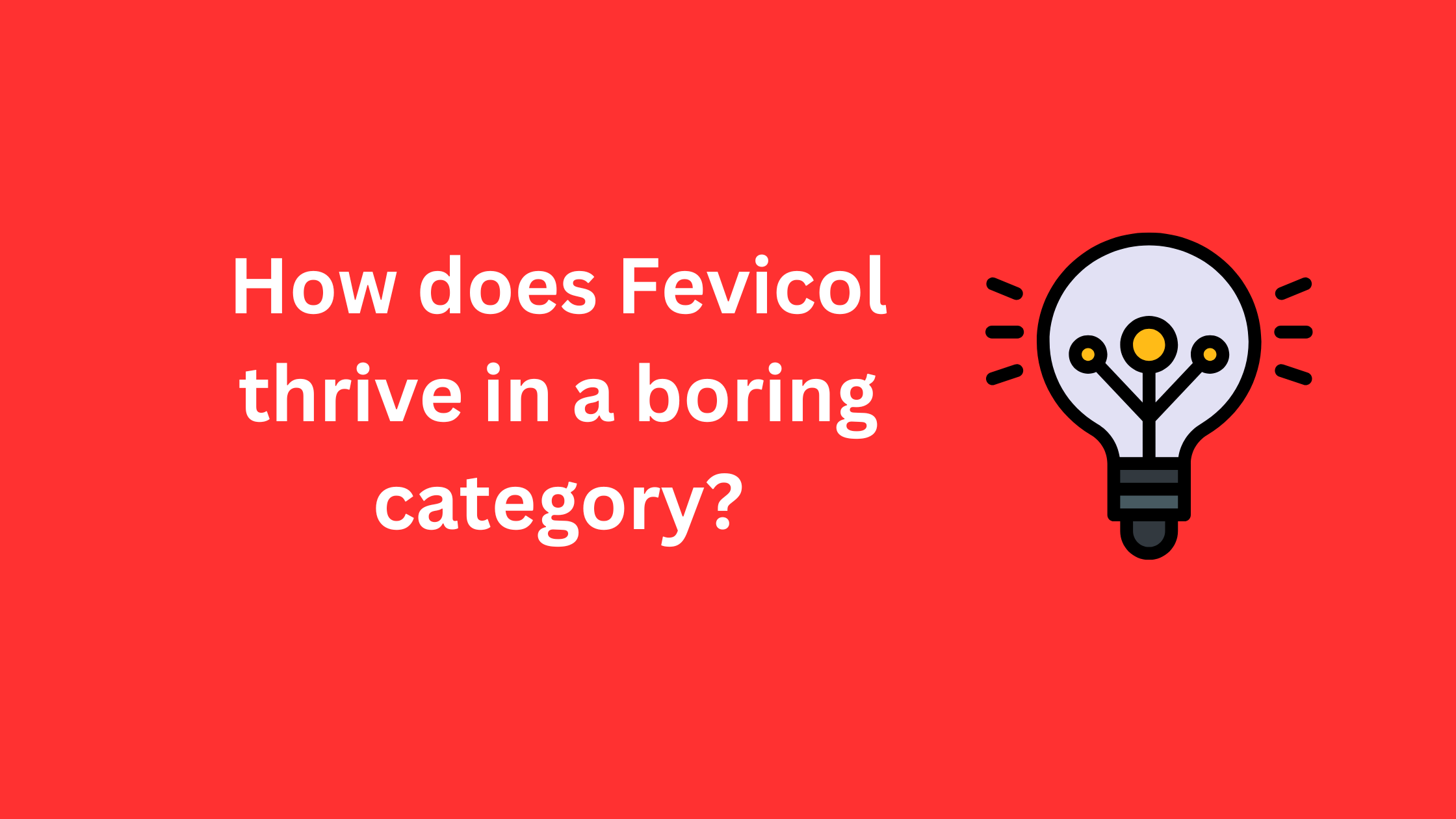
Product innovation is similar to virus mutation.
One way to approach product innovation is to think of it as a virus that mutates itself and creates new variants when the current strain becomes less effective.
This can be achieved by exploring new applications for existing products and expanding into untapped market segments when the existing product becomes more mature.
Fevicol, a brand of adhesives launched in 1959, has taken this approach to transform its tried-and-true adhesive into a versatile superstar.
Pidilite Industries, the parent company of Fevicol, originally operated in the matured construction segment, targeting carpenters in the Indian market.
Adhesives, often unsung heroes of the industrial world, silently hold everything together without much fanfare.
However, Fevicol, an established player in the industrial segment, has found new uses beyond its traditional domains.
It has adapted to changing times and found a place in the everyday lives of end-consumers for its adhesives.
Here are two examples of how Fevicol expanded its product line successfully:
1) Fevikwik for Home DIY Market Segment:
Fevikwik, a sub-brand of Fevicol, is an adhesive glue that works within seconds to repair broken items, regardless of the material, be it metal, wood, plastic, or paper.
This instant bonding adhesive even works wonders on expensive items such as jewelry, antiques, and electronics, making it an ideal partner for all home DIY and arts and crafts projects.
2) Fevicryl for Fabric Designing Targeting Women:
Another innovative brand extension by Fevicol is Fevicryl, one of India’s leading art & craft brands.
It aims to rekindle the passion for art with a wide range of innovative products, including colors and accessories for fabric designing.
Fevicryl has been working with women who have a passion for art and has helped convert some of them into successful professionals, or as Pidilite likes to call them, “artepreneurs.”
Thinking Like a Chef:
Like a chef who uses the same delicious recipe to create multiple mouthwatering dishes, each with its unique twist, Fevicol has created brand extensions such as Fevikwik and Fevicryl by leveraging its core competency in the adhesive segment and expanding into adjacent categories.
They achieved this by understanding the gaps in the market, gaining deep customer insights, and executing clever targeting and positioning strategies.
Action implications
The key idea is to leverage the core competency of the company and existing brand equity to find new applications for established products in adjacent segments by understanding the context in which the customers use the product.
For example, Fevikwik was introduced to address quick fixes in everyday life, understanding that customers needed immediate bonding solutions in various situations. Fevicryl, on the other hand, identified the creative context, targeting women with a passion for art.
Not all brand extensions succeed
Finally, It’s important to remember that not all brand extensions are created equal, and only a few of them succeed in gaining consumer acceptance.
Like Fevicol, it’s crucial to understand the existing brand association and meaning in the minds of customers.
In Fevicol’s case, the association with ‘adhesive’ is strong, so expanding into adjacent customer segments has worked in favor of the brand.
As a strategy consultant, I help companies devise effective brand architecture and extend their brand portfolio without compromising on brand relevance.




